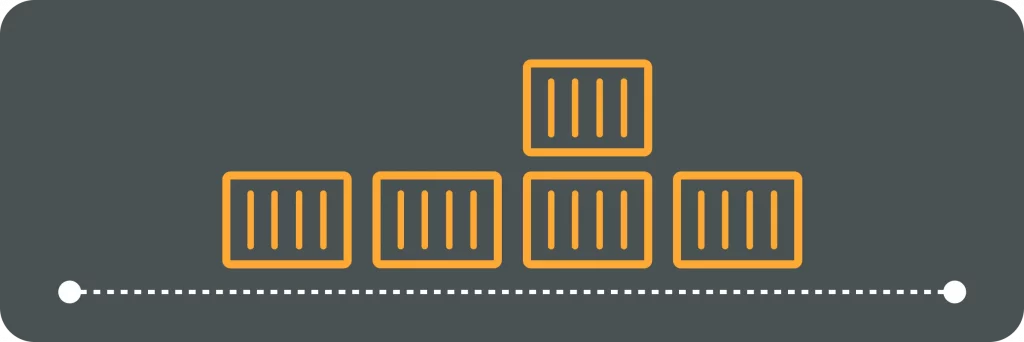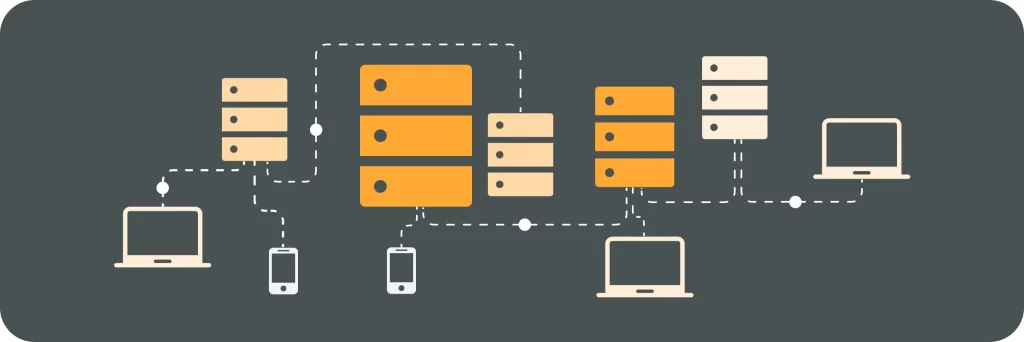Kubernetes has become a vital tool in the world of DevOps, allowing for efficient and scalable management of containerized applications. In this article, we will explore the essential skills needed to learn and master Kubernetes, providing you with the knowledge necessary to excel in your DevOps career.
Understanding Kubernetes: An Overview
Before diving into the details, let’s start with a high-level understanding of Kubernetes. So, what exactly is Kubernetes?
Kubernetes is an open-source container orchestration platform that automates the deployment, scaling, and management of containerized applications. It provides a set of powerful tools and features that enable seamless application deployment, increased resource utilization, and efficient scaling across a cluster of machines.
What is Kubernetes?
Kubernetes, also known as K8s (pronounced “kates”), was originally developed by Google and is now maintained by the Cloud Native Computing Foundation (CNCF). It allows you to run and manage containerized applications on a cluster of machines, ensuring high availability, scalability, and fault tolerance.
But how does Kubernetes achieve this? At its core, Kubernetes uses a master-worker architecture. The master node acts as the control plane, managing the overall state of the cluster and making decisions on how to allocate resources and schedule containers. The worker nodes, on the other hand, are responsible for running the containers and executing the tasks assigned to them by the master node.
With Kubernetes, you can define the desired state of your applications using declarative configuration files, and Kubernetes takes care of ensuring that the actual state matches the desired state. This eliminates the manual effort of managing individual containers and allows you to focus on developing and delivering your applications.
Why is Kubernetes Essential in DevOps?
In the world of DevOps, agility and scalability are essential. Kubernetes provides a platform that enables developers and operations teams to work together seamlessly, bringing the benefits of containerization to application deployment and management.
By leveraging Kubernetes, DevOps teams can easily package their applications into containers, which encapsulate all the required dependencies. These containers can then be deployed, scaled, and managed using Kubernetes, regardless of the underlying infrastructure. This not only simplifies the deployment process but also ensures consistent behavior across different environments, from development to production.
Furthermore, Kubernetes offers a wide range of features that are specifically designed to support DevOps practices. For example, Kubernetes provides built-in support for continuous integration and continuous deployment (CI/CD), allowing you to automate the entire software delivery pipeline. It also offers advanced networking capabilities, such as service discovery and load balancing, which are crucial for building highly available and scalable applications.
In addition, Kubernetes integrates seamlessly with other popular DevOps tools and platforms, such as Docker, Jenkins, and Prometheus. This allows you to leverage your existing toolchain and workflows, making it easier to adopt Kubernetes within your organization.
Overall, Kubernetes plays a vital role in enabling DevOps teams to achieve faster time-to-market, improved scalability, and increased operational efficiency. By abstracting away the complexities of infrastructure management and providing a unified platform for containerized applications, Kubernetes empowers organizations to embrace the principles of DevOps and deliver high-quality software at scale.
The Architecture of Kubernetes
Now that we have a basic understanding of Kubernetes, let’s explore its architecture in more detail.
At its core, a Kubernetes cluster is a complex system composed of various components working together to ensure the smooth operation of containerized applications. These components are meticulously designed to provide a robust and scalable platform for managing and orchestrating containers.
Exploring the Kubernetes Cluster
A Kubernetes cluster consists of multiple layers, each serving a specific purpose in the overall functioning of the system. At the heart of the cluster lies the control plane, which acts as the brain of the entire Kubernetes ecosystem. This control plane is responsible for managing the overall state and configuration of the cluster.
Within the control plane, you will find several key components, each playing a vital role in maintaining the cluster’s integrity. The kube-apiserver serves as the front-end for the Kubernetes API, handling incoming requests and serving responses. The kube-controller-manager ensures that the desired state of the cluster is maintained by continuously monitoring and reconciling any discrepancies. The kube-scheduler takes charge of distributing workloads across the worker nodes, making intelligent decisions based on resource availability and constraints. Lastly, the etcd acts as the persistent store for all cluster data, providing a reliable and distributed key-value store.
But a Kubernetes cluster is not complete without its worker nodes, also known as minions. These nodes are the workhorses of the system, responsible for running the actual containers. Each worker node runs a kubelet process that communicates with the control plane to receive instructions and manage the containers running on that node. This seamless collaboration between the control plane and worker nodes ensures that applications are deployed and executed efficiently.
Understanding Pods and Nodes
In Kubernetes, the basic unit of deployment and scheduling is a pod. A pod represents a group of one or more containers that share the same execution context and resources, such as network and storage. It encapsulates the application’s components and dependencies, providing a cohesive unit that can be easily managed and scaled.
Nodes, on the other hand, are the individual machines that make up the cluster. They form the foundation on which the pods are deployed and executed. Each node can host multiple pods, with the kubelet on the node responsible for managing the pods running on that node. This distributed approach allows for efficient utilization of resources and enables horizontal scaling of applications.
By abstracting away the underlying infrastructure and providing a unified view of resources, pods and nodes enable developers and operators to focus on the application logic and let Kubernetes handle the complexity of managing containers at scale. This abstraction layer promotes flexibility, portability, and scalability, making Kubernetes a popular choice for modern application deployment.
Setting Up Kubernetes
Now that we have a good understanding of Kubernetes’ architecture, let’s delve into the practical aspects of setting up a Kubernetes cluster.
Installation and Configuration Steps
Setting up a Kubernetes cluster typically involves several steps, including installing the necessary software, configuring cluster components, and connecting the nodes.
There are various ways to install Kubernetes, ranging from manually installing each component to using managed services provided by cloud providers. Whichever approach you choose, it is essential to follow the appropriate installation and configuration steps to ensure a smooth setup process.
Navigating the Kubernetes Dashboard
Once your Kubernetes cluster is up and running, you can use the Kubernetes dashboard to monitor and manage your applications. The dashboard provides a web-based user interface that allows you to view and interact with various resources in your cluster, such as pods, services, and deployments.
By leveraging the Kubernetes dashboard, you can easily track the status of your applications, troubleshoot issues, and perform administrative tasks, all through an intuitive and user-friendly interface.
Kubernetes Workloads
With your Kubernetes cluster up and running, it’s time to explore how to deploy and manage workloads on Kubernetes.
Deployments, ReplicaSets, and Services
Deployments, ReplicaSets, and Services are essential Kubernetes resources that enable you to define, manage, and expose your applications.
A deployment allows you to declaratively define the desired state of your application, specifying the container image, number of replicas, and other configuration details. Kubernetes ensures that the actual state matches the desired state by automatically creating and scaling the necessary replicas.
ReplicaSets are responsible for maintaining the desired number of replicas specified in the deployment. They monitor the health of the pods and take appropriate actions, such as scaling up or down, to ensure the desired state is maintained.
Services, on the other hand, enable communication between different parts of your application. They provide a stable, network addressable endpoint that can be used to connect to your application, regardless of the underlying pod or node.
StatefulSets and DaemonSets
StatefulSets and DaemonSets are advanced Kubernetes resources that allow for more specialized deployment scenarios.
A StatefulSet is used when you need to manage stateful applications, such as databases or message queues, where each instance has a persistent identity and needs to maintain its state. StatefulSets provide stable network identities and stable storage, ensuring that each instance is consistently accessible and that data is preserved across restarts.
DaemonSets, on the other hand, are used when you need to ensure that a specific pod runs on each node in the cluster. This is particularly useful for deploying monitoring agents, log collectors, or other system-level daemons that need to run on every node.
Kubernetes Networking Concepts
Kubernetes provides a flexible networking model that allows applications to communicate with each other securely and efficiently.
Service Discovery and Ingress Controllers
Service discovery is a crucial aspect of Kubernetes networking, as it allows pods and services to find and communicate with each other. Kubernetes provides a built-in service discovery mechanism that automatically assigns a DNS name to each service, allowing other pods to access the service using a human-readable name.
Ingress controllers, on the other hand, provide external access to services within the cluster. They act as an entry point for incoming traffic, routing it to the appropriate service based on rules defined in the ingress configuration. This enables you to expose your services to the outside world while maintaining fine-grained control over traffic routing and SSL termination.
Network Policies and CNI
Kubernetes also supports network policies, which allow you to define rules that control the flow of network traffic between pods. By using network policies, you can enforce fine-grained access control, isolating and securing your applications.
Under the hood, Kubernetes relies on a Container Network Interface (CNI) plugin to configure networking for the cluster. The CNI plugin is responsible for assigning IP addresses to pods, setting up the necessary network routes, and ensuring communication between pods within the cluster.
By mastering the essential skills outlined in this article, you will be well-equipped to harness the power of Kubernetes in your DevOps journey. Whether you are a developer looking to streamline your application deployment process or an operations engineer seeking scalable and efficient infrastructure management, Kubernetes is a must-have skill for navigating the ever-changing landscape of modern software development and deployment.




